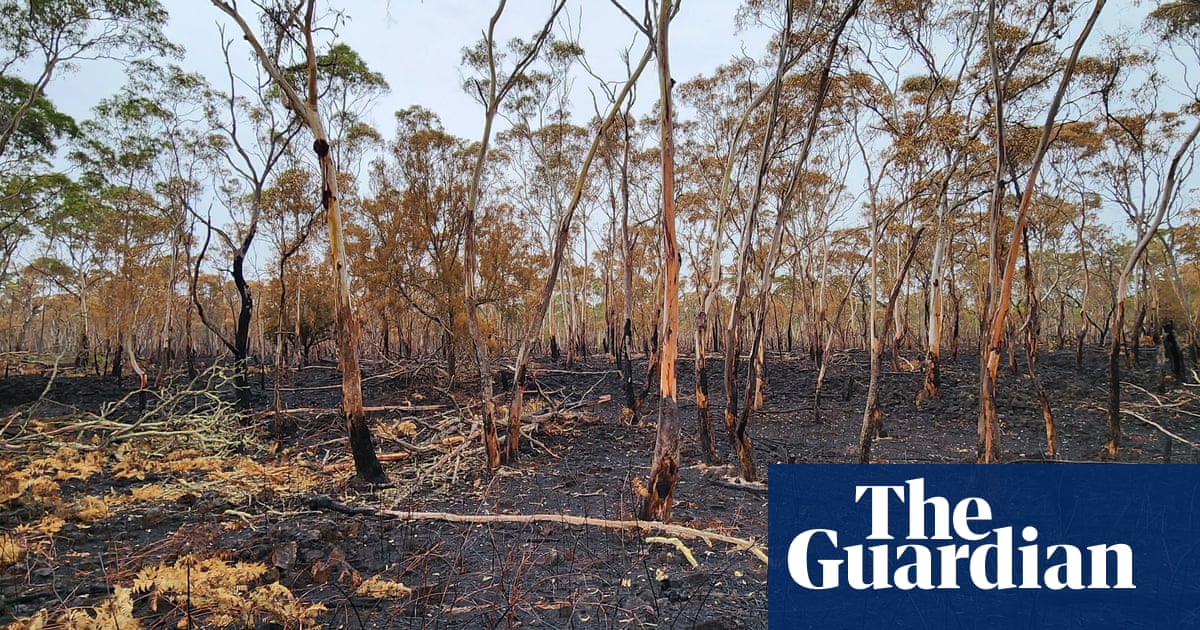The Victorian government has used aircraft to shoot about 700 koalas in south-westVictoria.
The government says the unprecedented step was taken to prevent further suffering of the animals, after a fire in Budj Bim national park burned through 2,200 hectares, including a large area of manna gum, a key food source for koalas in the park.
While aerial culling is routinely used in controlling invasive species such as deer and pigs, this was the first time wildlife have been shot by air for welfare reasons.
The drastic actionhas sparked outrageand received global media attention – so why do it?
Lisa Palma, chief executive of Wildlife Victoria, says the organisation was “deeply saddened” by the devastating impact on the koala population due to the fires in the Budj Bim national park.
“National parks are the last bastion for our wildlife and increasing severity of bushfires and other extreme weather events puts Australia’s incredible native species like the koala at significant risk.”
“The tragic reality is that bushfires typically lead to substantive loss of life and suffering for our wildlife and the most compassionate course of action for wildlife suffering severe burns and injuries is often euthanasia.”
Palma says no koala should lose its life without deep consideration and care, and Wildlife Victoria’s priority was ensuring that any method of euthanasia the government used after a bushfire was “humane, instant and has appropriate oversight”.
Sign up for the Afternoon Update: Election 2025 email newsletter
The state government’s chief biodiversity officer, James Todd, says the sole objective of the aerial cull was to prevent further suffering in animals affected by the fire, and involved specialist staff working with experienced vets, wildlife carers and animal welfare experts.
“Due to direct impacts of the fire, the poor health and low likelihood of survival of many animals due to the ongoing drought conditions and lack of food post-fire, many of the animals are requiring euthanising.”
“This decision to employ this method was not taken lightly,” Todd says, noting that it was informed by an experienced veterinarian and leading wildlife welfare ethics experts.
Other methods were deemed not appropriate given the “extremely rugged terrain”, the inability to safely access the area by foot, the remote location of animals high in the canopy, and safety risks from fire-affected trees, he says.
“The options were to just leave them to deteriorate or take proactive steps to reduce suffering by using aerial assessments.”
Deakin University associate prof Desley Whisson, a wildlife ecologist who specialises in koala management, thinks it was a “merciful, compassionate response” in the circumstances, and one made despite the repercussions.
“It’s political suicide,” she says. “It would have just been easier for them to walk away and not do anything.”
“This is quite a drastic response,” she says.” But if you’ve got helicopters flying over an area and you see hundreds of koalas that are burnt, or covered in fire retardant, or otherwise showing signs of distress, I think you would want to make a decision to put them out of their misery.”
Palma says while the organisation would not like to see aerial killing of wildlife become the norm, euthanasia should be carried out using the approach that causes the least stress to the animal, as humanely as possible, and always be scrutinised.
Todd says koalas were euthanised only after being individually assessed first, often at less than 30 metres, supported by use of binoculars and other optical aids.
He says an initial aerial trial – supported by a ground-based veterinary assessment – demonstrated that aerial shooting was both accurate and humane. According to Todd, a wildlife vet’s assessment during the trial showed that “all koalas assessed and euthanised by the aerial team during the trial were in very poor health and would have continued to suffer in a deteriorating state of welfare if they had remained alive”.
While koalas in New South Wales, Queensland and the Australian Capital Territory are listed asendangeredunder federal laws, the situation in Victoria and South Australia is quite different, with too many koalas and not enough trees in many places.
Rolf Schlagloth, a koala ecologist based at Central Queensland University with 20 years experience researching the animals in Victoria, says the legacy of koala management in Victoria since colonisation has meant that when fires do occur, the impacts are worse.
He questions the effectiveness and accuracy of aerial culling and thinks a ground-based approach would have been preferable, albeit more expensive.
But he emphasises that any emergency response is a Band-Aid solution that doesn’t address the underlying landscape issues. “The real issue is the lack of connectivity and failing to properly manage koala habitat and native vegetation.”
In south-west Victoria, blue gum plantations have exacerbated the problems of insufficient and fragmented habitat that is too small for the number of koalas.
Plantations were “like a lolly shop” for koalas, Schlagloth says. So, the koalas move in, and then when their home is harvested, they go back to the native forest, but “there’s already koalas there and they can’t disperse because there’s farmland around.”
“So we’ve got this whole problem, and this koala overpopulation, or tree under population,” he says.
Schlagloth says the state government now needs to take responsibility for the situation facing koalas in Victoria.
“The koala is a flagship species. If we can’t solve the problems of the koala, what hope do other species have that don’t have that profile.”
